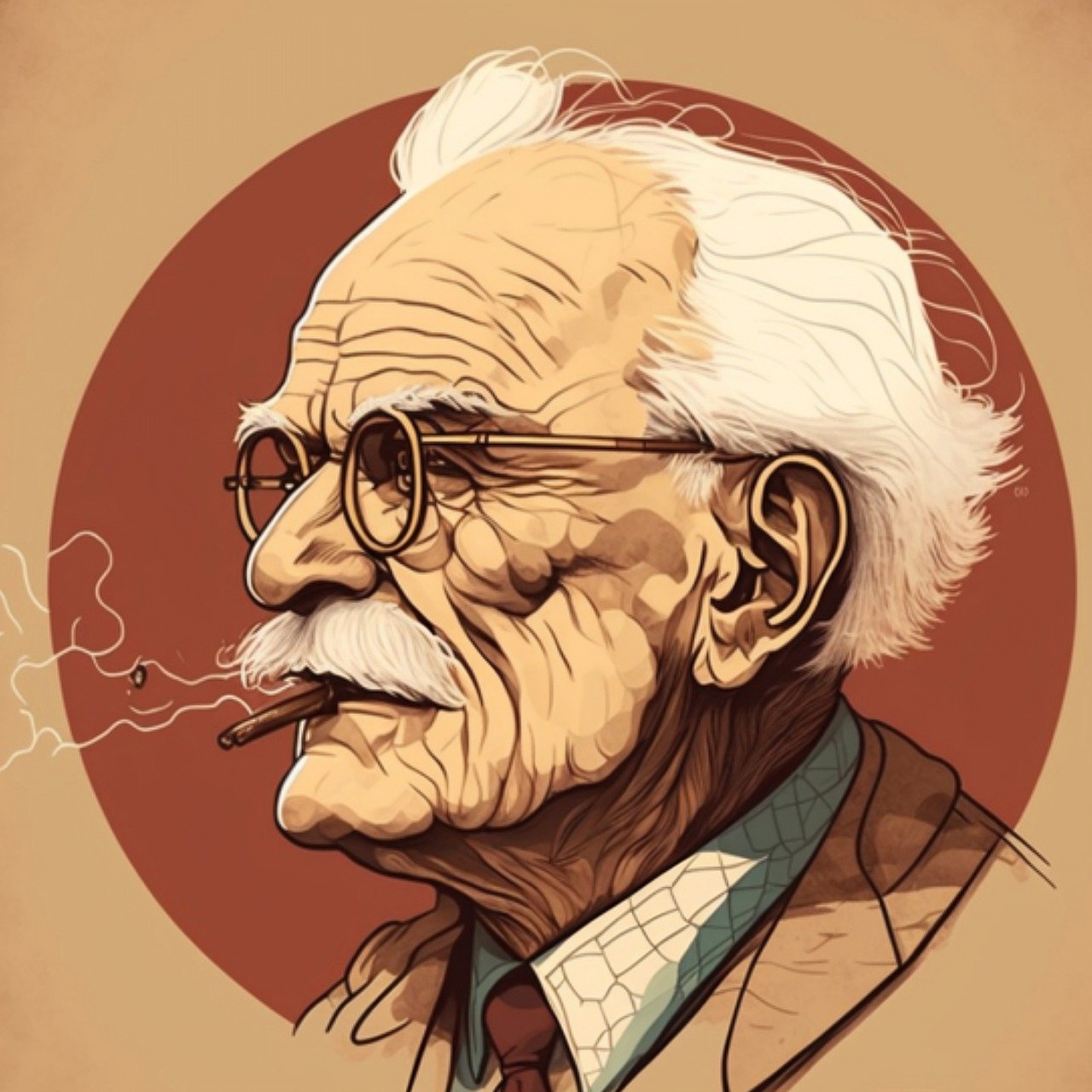Psychology and Spirituality: A Journey from Jung's Individuation to Mystical Enlightenment

Freud's Psychological System and Levels of Consciousness In Freud's psychological framework, the human mind is structured into three interrelated components—the Id, Ego, and Superego—which collectively shape personality and behavior. Freud’s approach highlights the role of unconscious forces in human action.

Sigmund Freud
- Id (Instincts): The Id operates as the primal, instinct-driven component of the psyche. Active from infancy, it prioritizes immediate gratification and basic needs, functioning entirely in the unconscious realm. Its sole guiding principle is the "pleasure principle," devoid of concern for consequences or societal norms.
- Ego: The Ego serves as the rational and mediating force, balancing the desires of the Id with the constraints of external reality. Rooted in the "reality principle," it enables individuals to navigate their environment and societal expectations.
- Superego: The Superego represents the internalized moral standards and cultural ideals acquired through upbringing and socialization. It evaluates actions against ethical norms and generates feelings such as guilt or pride.
Interaction of Components: The dynamic interplay of these three components governs human behavior: the Id generates desires, the Ego mediates realistic responses, and the Superego enforces moral judgments.
- Conscious Mind: Current thoughts, emotions, and experiences.
- Unconscious Mind: Repressed memories and instincts that exert a significant influence on behavior.
Limitations Regarding Spirituality: While Freud’s model explores individual unconscious processes, it omits broader spiritual or collective dimensions, confining human experience to personal instincts and societal structures.
Jung's Psychological System and Expanded Dimensions Jung’s approach builds upon Freud’s ideas but introduces new concepts, particularly regarding consciousness and spirituality.

Carl Gustav Jung
- Personal Unconscious: Similar to Freud’s notion of the unconscious, this layer encompasses repressed memories, forgotten experiences, and individual emotions.
- Collective Unconscious: Jung’s revolutionary concept, the collective unconscious, refers to shared human experiences and archetypes—universal symbols like the Hero, Shadow, Mother, and Animus—that transcend cultural and historical boundaries.
- Self: Jung proposed that human development culminates in the integration of the Ego with both the personal and collective unconscious. This process, known as Individuation, leads to the emergence of the Self, representing the true essence of an individual.
Spiritual Dimensions: Jung recognized spirituality as a fundamental aspect of human growth. He argued that engaging with archetypes and exploring the collective unconscious are essential for achieving self-integration, aligning his ideas with mystical traditions of inner enlightenment.
Humans vs. Animals: Psychological and Spiritual Dimensions
- Instincts vs. Self-Awareness: Animals rely on instincts for survival, whereas humans possess abstract thinking and self-awareness, enabling them to grapple with existential challenges.
- Anxiety and Foresight: Unlike animals, which react to immediate threats, humans anticipate hypothetical scenarios, leading to prolonged anxiety and existential concerns.
- Creativity and Environmental Mastery: While animals coexist harmoniously with nature, humans transform their surroundings through creativity and innovation, seeking deeper meaning and connection.
Role of Spirituality: Humans uniquely seek existential truths through practices like meditation and introspection, striving for harmony and unity with the cosmos.
Meditation and Individuation: Tools for Inner Growth Jung viewed meditation as a vital tool for self-awareness and Individuation. Through meditation, individuals explore their unconscious, integrate disparate elements of their psyche, and transcend cultural and psychological limitations, fostering inner enlightenment.

Jung's Ideas and Mystical Traditions: A Comparative View Connections to Mysticism: Jung identified parallels between his psychological theories and mystical teachings. Themes like Self-Knowledge, Unity of Being, and Inner Light appear in traditions such as Buddhism, Islamic Sufism, Hindu cosmology, Kabbalah, and Taoism. These traditions emphasize personal evolution and integration, mirroring Jung’s Individuation process. Attaining Divinity: At the highest level of development, individuals transcend mental and physical boundaries, achieving spiritual perfection. Jung, akin to mystical traditions, envisioned this state as divine creativity—a harmonious union with cosmic energies.
Conclusion:
Freud and Jung offer profound insights into the human mind, each addressing unique aspects of psychological and spiritual development. By integrating their teachings, individuals can embark on a transformative journey of self-awareness, achieving inner harmony and cosmic unity. Through meditation and self-integration, humans unlock their potential as creative co-participants in the universe, reflecting its divine essence.
By: Research Team of 369 Center